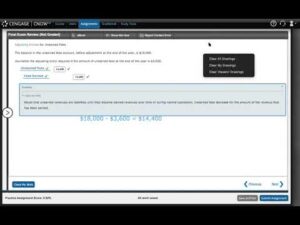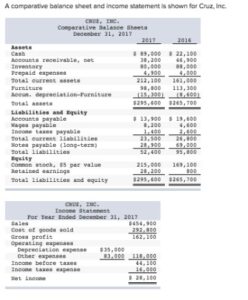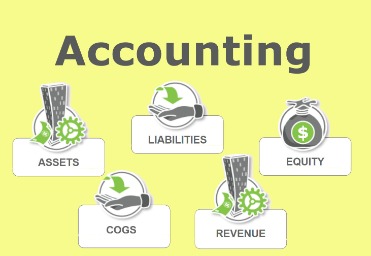
If you don’t have outstanding accounts receivable but want additional financing to increase your cash flow, cash-flow loans could be an option. Cash-flow loans are short-term, often high-interest loans or lines of credit offered by online lenders. You shouldn’t rely on cash-flow loans for typical expenses such as rent and payroll. Reserve them for expenses that will ultimately increase your business’s revenue, such as a marketing campaign or a new piece of equipment. The balance sheet shows your assets, liabilities, and equity at a given point in time.

Discover the world’s #1 plan building software
These tools allow businesses to plan and schedule posts in advance, so that their social media channels remain active even when direct manual posting isn’t feasible. Learn how to apply for a business loan and explore business loans for women. Plus, having an accurate payroll system helps you stay compliant with employment regulations and build trust with your employees, so they know they’re being paid correctly and fairly.
Separate personal and business finances.
Many businesses that sell directly to the end customer take payment immediately. For example, a restaurant is paid once the customers finish their meal, while a plumber or electrician will expect to be paid as soon as their work is done. It comes into the business as ‘income’ from customers and clients who buy your products and services. It flows out of the business in the form of ‘expenditure’, such as rent, https://www.kelleysbookkeeping.com/how-to-calculate-the-ending-inventory/ wages, monthly loan payments, payments to suppliers, etc. Every year in the UK, around 400,000 new start-up businesses begin trading, but just two-thirds of those are still in business within three years and just half remain after five years. For most of those businesses, it’s not a lack of customers or poor-quality products or services that are responsible for their demise – it’s simply a lack of cash.
Ways to Manage Cash Flow for Your Business
- As your company grows, you may want to purchase more commercial real estate, acquire additional insurance policies and take out more loans to facilitate these pursuits.
- We collaborate with business-to-business vendors, connecting them with potential buyers.
- Choosing the right payroll software is an easy way to ensure that salaries are directly deposited into your employees’ bank accounts.
- This type of loan is extremely quick to arrange and the cash can be in your account in a single day to help you cover immediate overheads such as rent and payroll.
In addition to understanding tax deductions, learn how to lower your tax burden as a small business owner through tax audit. No matter how good your product or service is, if you are lost when it comes to small business finance management, building a profitable business may remain a far-fetched dream. It is important to remember that business finances aren’t just about your earnings; they’re also about how you spend your money and where you get it. When it comes to the latter, you should understand the two main funding categories below. There will always be business issues that need to be addressed today, but when it comes to your finances, you need to plan for the future. “If you’re not looking five to 10 years ahead, you are behind the competition,” said Tina Gosnold, founder of QuickBooks specialist firm Set Free Bookkeeping.
To prevent this, have three months’ living expenses saved plus the amount you are expecting to need for the first three months’ business expenses. A CBA is a technique for making non-critical choices in a relatively https://www.adprun.net/ quick and easy way. It simply involves adding money in benefits and money in costs over a specified time period, before subtracting costs from benefits to determine success in terms of dollars.

How to choose the right e-commerce platform for an online store?
The working capital formula is current assets less current liabilities, and you need to maintain a positive working capital balance. You can apply financial controls to manage both liquidity and solvency, which are metrics used to manage cash. • Explore small-business tax credits, such as the research and development tax credit.
When it comes to running a successful online business, relying on your gut just doesn’t cut it anymore. Luckily, there are plenty of online business analytics tools designed to help you make informed, data-driven decisions. Their power lies in the wealth of data they collect about user interactions on your website, providing insights invisible to the naked eye. In the digital age, effective marketing is often synonymous with smart automation. After all, busy business owners and their marketing teams rarely have time to manually manage every nitty-gritty detail of their ongoing campaigns. An individual 401(k), or solo 401(k), operates similar to a traditional 401(k) but is designed for self-employed individuals and small business owners.
Whatever business financial management strategy you opt for, be sure that you have one and that you use it on a consistent basis. If you’re concerned about the idea of going into debt, consider the following. Reaching your business goals often involves leveraging other people’s money. You can use the funds you borrow to hire new staff, expand office space, invest in new technology, and more. So, it’s important to at least consider whether embracing financing makes sense as part of your business strategy.
As many businesses go omnichannel to reach more customers, financial inefficiencies can arise if inventory isn’t being properly tracked across multiple channels. Some types of businesses are overwhelmed with excess inventory, while others are trying to keep up with a surge in customer demand. Both situations can lead to lower sales, a poor customer experience, and financial instability if businesses don’t know what they have in stock. Once you’ve created a workable budget, don’t forget to review and update it regularly. This will enable you to stay on track and reflect changes in your business operations and financial goals.
Don’t be afraid to consult a professional, but make sure you have a handle on the day-to-day management of your business’s finances, as well as a plan for the future. The best way to protect yourself and your business is to keep your personal and business finances completely separate from each other. You should open dedicated business bank accounts and business credit cards for your company and use only those accounts for business purposes. As a small business owner, your personal and business finances are closely linked. Think about your own financial goals, like saving for retirement, college funds for your kids, or paying off debt. A financial advisor can help you create a comprehensive plan that includes both business and personal financial goals.

Putting in the time to create and keep up with a small business budget can simplify the way you manage money. Keep in mind that not all credit card companies and vendors report payments to the business credit bureaus. If you’ve been making on-time payments and they haven’t been submitted, consider signing up for Dun & Bradstreet’s CreditBuilder product.
It’s a good idea to start separate bank accounts for your company the day you start business. Implementing systems and best practices for keeping track of expenditures and revenues is key to managing cash flow. Without these systems in place, it’s all too easy to lose track of funds or create the financial records necessary to file taxes and apply for small financial forecasting vs financial modeling business financing, if necessary. Utilize financial software to track your expenses and revenue accurately, ensuring you have real-time insights into your business’s financial health. Regularly review your financial reports, such as income statements, balance sheets, and cash flow statements, to monitor your performance and identify areas for improvement.
You’d follow this system for all of the account categories that you have. Common categories include asset, liability, equity, revenue, and expense accounts. Finder monitors and updates our site to ensure that what we’re sharing is clear, honest and current. Our information is based on independent research and may differ from what you see from a financial institution or service provider. When comparing offers or services, verify relevant information with the institution or provider’s site.
